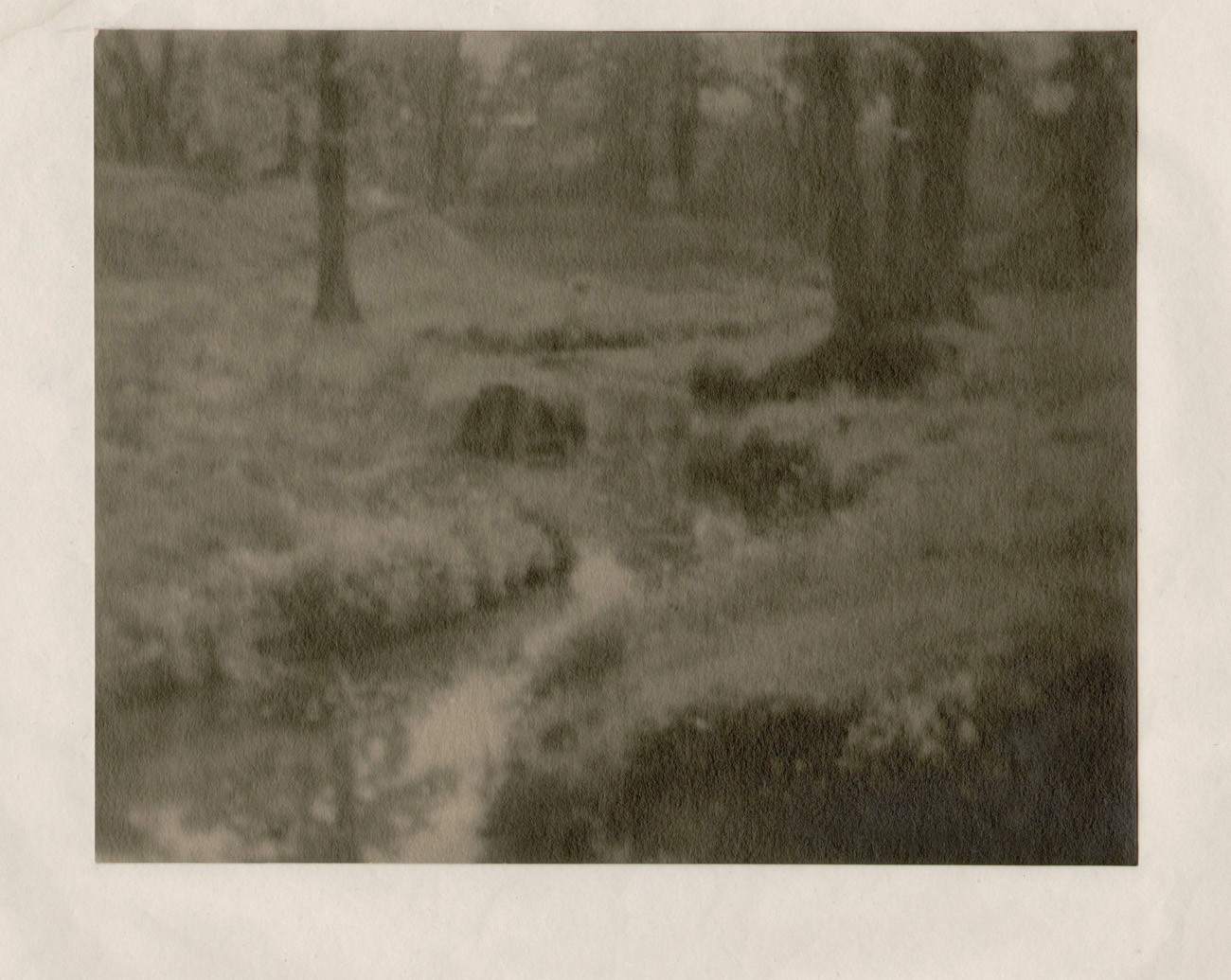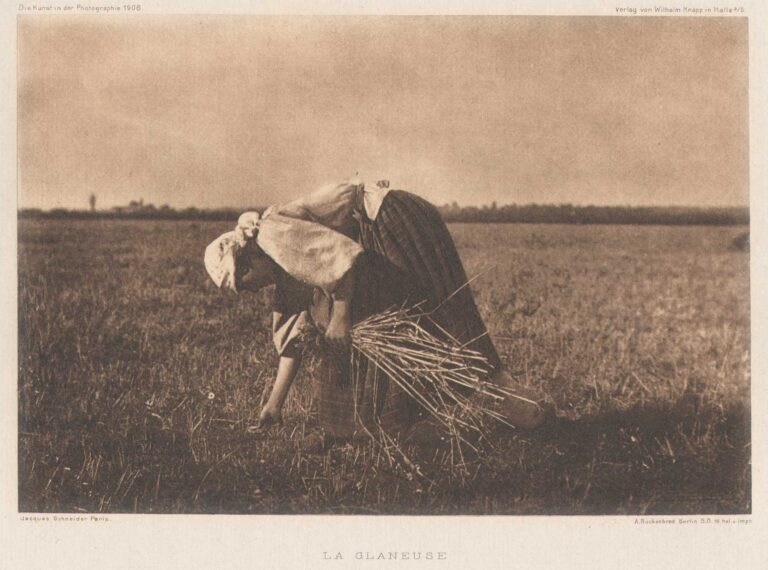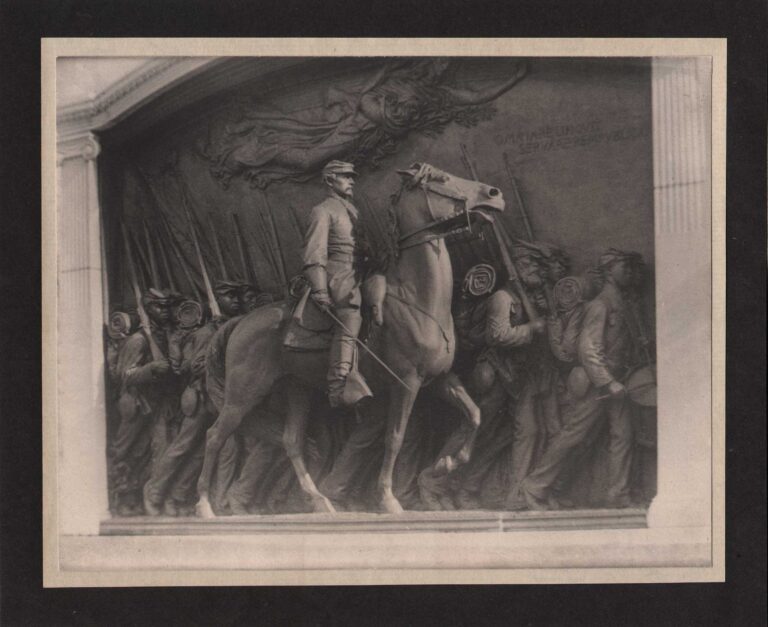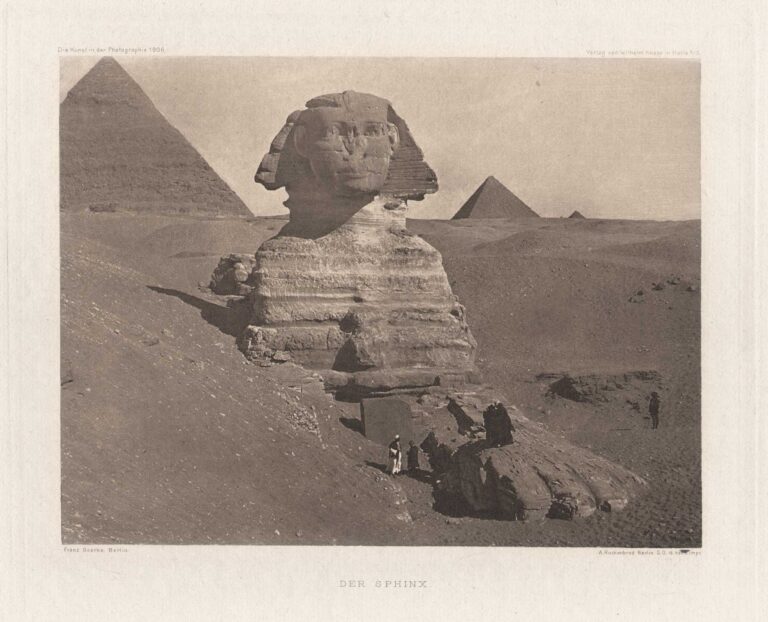
The Brook
In 1906, amateur photographer C.F. Clarke (Charles F. Clarke) was named the Grand Prize winner in the Fourth Annual Photographic Contest sponsored by Boston’s Photo Era, a photographic journal with a large circulation and reputation amongst amateur photographers. Most likely originally taken the year before in 1905, this vintage carbon photograph, titled The Brook in Clark’s hand, is tipped to the inside of an oversized, cream-colored paper presentation folder. It is one of ten photographs Clarke had entered in this contest. Photo-Era chief editor Thomas Harrison Cummings began the January, 1906 issue of the journal with comments on the contest and highlighted Clarke’s efforts:
OUR FOURTH ANNUAL PHOTOGRAPHIC CONTEST
“IN presenting the results of this, the Fourth Annual Photographic Contest, to our readers, our first word is one of congratulation and encouragement. We desire to thank the thousand and more contributors who have been interested enough to enter their pictures in this Competition. We appreciate this interest and wish that all would accept our heartiest thanks. We congratulate the winners, as success in this Annual Contest means much more than ever before. The standards in making the awards were higher and the general average of excellence better than in any previous contest. The marked advance in the quality of the pictures submitted was very encouraging and the individuality so ably expressed in them by the different artists has demanded of us greater breadth of mind and opinion in reviewing them. While nothing of a particularly striking character appears, this growth and expansion of artistic ideas among the rank and file of the exhibitors is worthy of being noted, as marking progress.
One cannot help the feeling, however, that the really advanced school of pictorial photography is not adequately represented in this collection of pictures. And while we deplore this fact, we trust that another year will see all personal feeling and bias left aside, and all schools of photographic art properly represented. On the whole, this may fairly be considered a sincere and interesting exhibition of the tendency of modern photographic art in America, at this time.
Sir Joshua Reynolds used to say that “The great fame of great painters does not proceed from their works being more highly finished than those of other artists or from a more minute attention to details, but from that enlarged comprehension which sees the whole object at once and that energy of art which gives its characteristic effect by adequate expression. The detail of particulars which does not assist the expression of the main characteristic is worse than useless if it dissipates attention and draws it from the principal point.
“It is expressing the general effect of the whole, which alone can give objects their true and touching characters; and wherever this is observed, whatever else may be neglected, we acknowledge the hand of a Master.”
What is true of paintings is equally true of photographs, and this sentiment was the dominant note in influencing the judges to make their awards in this contest. Breadth of light and shade, not the rendering of detail and sharp focus, is what enables one finally to give a poetic and artistic rendering to a given subject. Tonality and atmospheric effect are necessary to give the true pictorial values to a landscape, while form, color and detail are only different methods of handling and expression. With these facts well in mind the following awards have been made: —” 1.
After a list of the winners is published, Cummings continues his analysis of the winners, including Clarke:
“The winning of the Grand Prize by Mr. C. F. Clarke of Springfield, Mass., two years in succession, gives him the silver prize cup, and again calls attention to a faithful, deserving, and highly creditable worker in the field of picture-making. His subjects are such as the painter-artist himself would delight in, and show Mr. Clarke’s artistic appreciation of nature. His pictures are not mere perceptions, but reproductions of his conception of beauty in nature, and they please us unconsciously and charm by their poetical truthfulness. It is his ability to control and idealize his pictures that stamps him as an artist of no mean ability, who will undoubtedly be heard from later in the picture world. Others, like Louis Fleckenstein, W. H. Zerbe, Jr., Theodore Eitel, W. H. Porterfield, Charles Vandervelde, were a close second in this contest, and express themselves esthetically, each in his own individual way. Their pictures are sane and wholesome, and show evidences of an artistic feeling that it is easy to interpret and to find pleasure in.” 2.
This photograph, alternately titled Winding Brook, is reproduced as a full-page frontispiece halftone, part of the Grand Prize Collection, in the January, 1906 issue of Photo-Era. (flipped-and with noticeably more delineation)
A note on Clarke’s photographic titles: even within this issue of the Photo-Era, confusion arises because another photograph, part of his grand prize winning entry, carries the title The Brook, although it features another scene entirely.
Printed in pencil in Clarke’s hand on recto of paper-presentation folder:
The Brook
C.F. Clarke
1. Our Fourth Annual Photographic Contest: by Thomas Harrison Cummings: in: Photo Era-The American Journal of Photography: Photo Era Publishing Company: Boston: Vol. XVI, January, 1906: pp. 3-4
2. Ibid: p. 6



